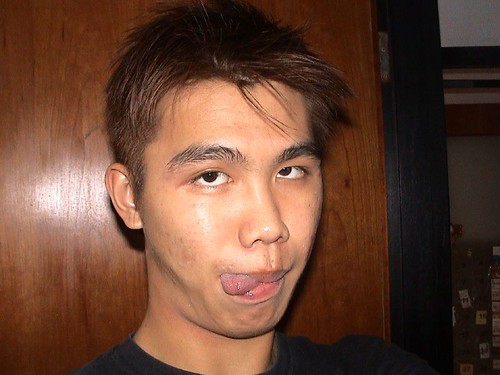Just came back from my most interesting Bio lecture to date! Ever. To those who don't know, I'm taking a course in Biological toxins, spurred on by my interest in Sarin, Anthrax and oher chemicals (such as CS-gas) which developed during my spiel in CBRD, 39 SCE! And on another note, I see that CPT Lim Yew Sheng has visited my site:) Hi Sir!
Anyway, I took Biology and Economics in JC, which probably helped me a lot in UofC. Now, we are studying Ion channels. And specifically, I just read an article about the Acetylcholine receptors found in the dentritic ends of neurons and in the post-synaptic membrane in the region of the synnapse.
So acetylcholine is a neurotransmitter, but how does the receptor cell work and function? Well, it's formed by 5 sub-units of proteins, 2 alpha subunits, which contain the receptor site, a beta, gamma and delta subunit. Each of the subunits have 30-35% similarity in amino acid sequence, which to molecular biologist probably mean that they were derived from some ancient common ancestor and evolved through gene duplication. The binding site of acetylcholine on the alpha subunit is made up of Tyrosine (Y), Tryptophan (W), and Cysteine (C). Now if I remember correctly, all 3 amino acids are hydrophobic, meaning that acetylcholine probably has hydrophobic regions that bind to these aminoacids.
The binding site is found external to the cell membrane i.e. it is hydrophilic. Also, it is found on the amino terminal of the polypeptide sequence.
The Ion channel itself is formed through 3 rings. Imagine a cone with 3 constrictions. The constrictions are formed by the interaction of amino acids between the five subunits. The topmost and bottommost constriction are negatively charged, thus, sodium is drawn through the ion channel (Formed by Glutamic acid). The middle ion channel is a Leucine ring, where the absence of neurotransmitter would cause a conformational change in the structure of the subunits, causing the ring to bend inward and close the ion channel.
Oh, and each subunit has 4 hydrophobic segments, M1-M4. The segments which form the ion chanel are the M2 segments of the 5 different subunits.
Hope I explained it clearly. Alex, if you find anything wrong with this explanation, tell me:) Or even Yongchun. Haha.
I find Biology fun. Maybe I should have taken Bio AND Econs S papers. Damn. Then maybe I'll get 2 Ungradeds instead of 2 Merits... Haha...
Okay, back to Convex preferences and indifference curves.
lip
ranting
Subscribe to:
Post Comments (Atom)




No comments:
Post a Comment